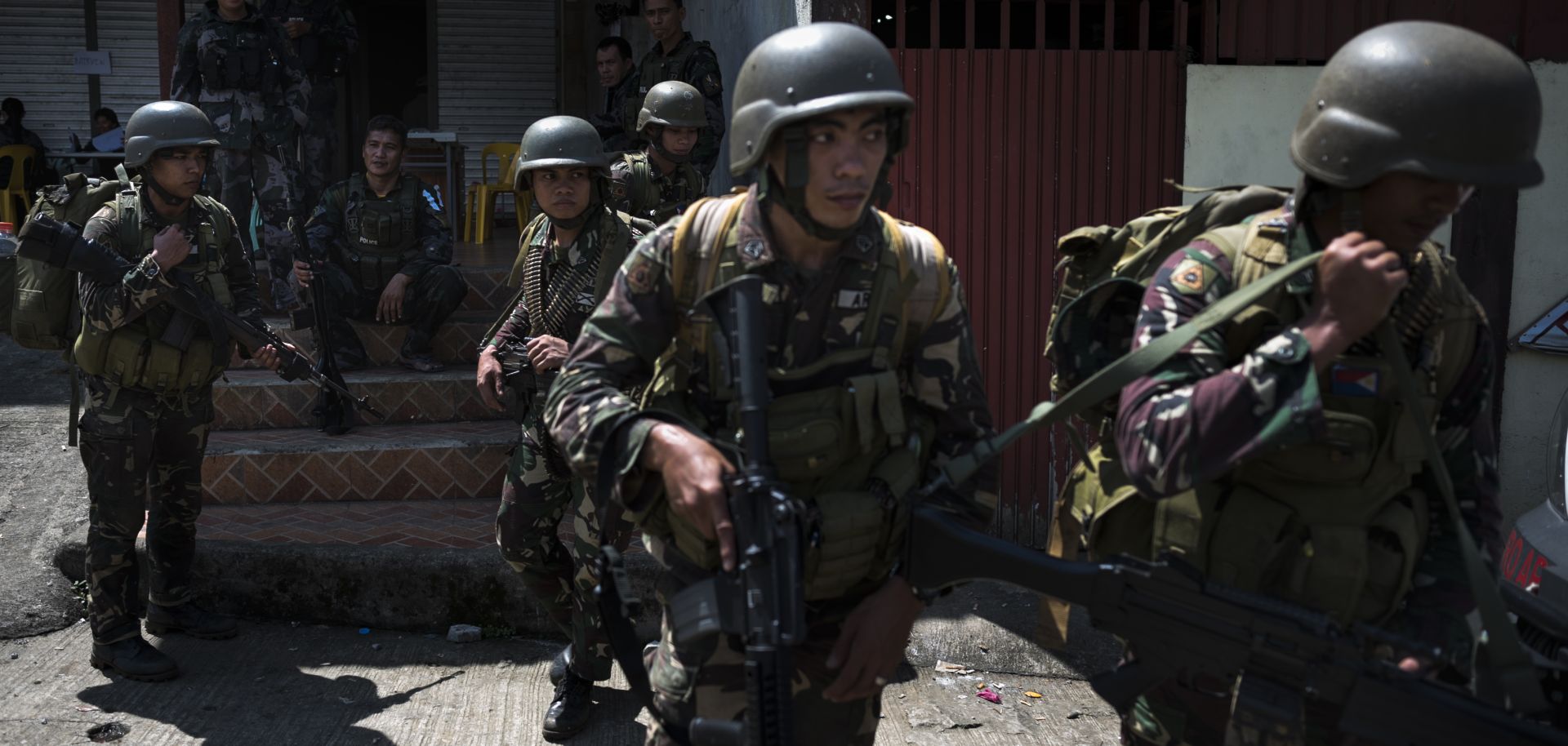COLUMNS
Could Militants in the Philippines Make a Comeback?

Apr 24, 2018 | 08:00 GMT

Soldiers being deployed to the frontline in June 2017 inside the besieged Marawi City.
(Jes Aznar/Getty Images)
Highlights
- Militant attacks, piracy and kidnapping continue to threaten the southern Philippines six months after the end of fighting in Marawi City.
- Although that threat has diminished, slow movement on the political front gives the threat more time and space to grow.
- Regional interconnectedness means that militant safe havens in the southern Philippines will continue to pose a threat to Malaysia and Indonesia.
Subscribe Now
SubscribeAlready have an account?
